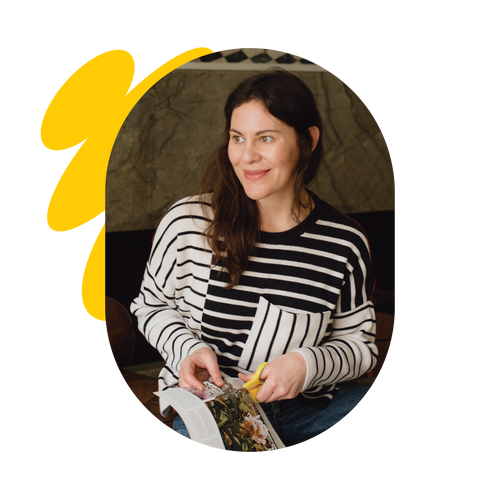How To: Collage
Collage is one of our favorite art forms, mainly because there is really no wrong way to create one. And we also love its groundbreaking history, which you can read about here.
There are so many ways to approach collage making! We thought it would be useful to share a few of our favorite techniques and ideas on how to make your collage completely unique to you. And don't forget to check out our Collage Kit here!
Step 1: Figure out what kind of collage you want to make
One suggestion as you begin to make your collage is to choose a theme. Some examples include: nature (underwater, jungle, the cosmos, gardens, flowers), animals, fashion, food, or travel. Another suggestion is to create a collage that explores different textures, colors, shapes, lines, etc. This would be an abstract work, featuring non- representational images (nothing we can recognize or specifically identify).
Maybe your collage will be both abstract and thematic! Again, there are no rules to making a collage.
Step 2: Drawing with Scissors
What kinds of lines will you make with your scissors? Straight, jagged, curvy, curved, etc.

What kinds of shapes can be made by drawing with scissors? Typically shapes can be categorized as either geometric or organic.

Geometric shapes are those that we can identify and often have straight lines - except for the circle. Examples include: square, rectangle, triangle, pentagon, octagon, rhombus, etc.

Organic Shapes are those that we cannot specifically identify but are reminiscent of forms we find in nature. They often have curved lines.
Spread your papers out and begin to cut out different shapes, geometric and organic. Keep in mind that you want to create different sizes – smaller, medium and larger shapes. It is up to you whether you want to create a plethora of different shaped cut outs, or maybe you want to follow a pattern and only cut out one type of shape.
Questions to keep in mind:
- Will you put different shapes and sizes of paper on top of one another - layering them?
- Will you add texture to your paper by crumbling or crinkling it?
- Will you cut up all your pieces of paper or will you tear some?
- Can you make your collage 3D so some of the paper emerges off of the flat surface of the board?

Step 3: Assemble your composition (but don’t glue yet!)
Begin to place the various shapes on the hard surface and move them around until you decide on the composition.

Step 4: Time to glue
When you are happy with your composition, glue the pieces onto the hard surface. Make sure you add a little bit of glue on the edges and press firmly around the whole shape so the paper fully adheres to the surface.




